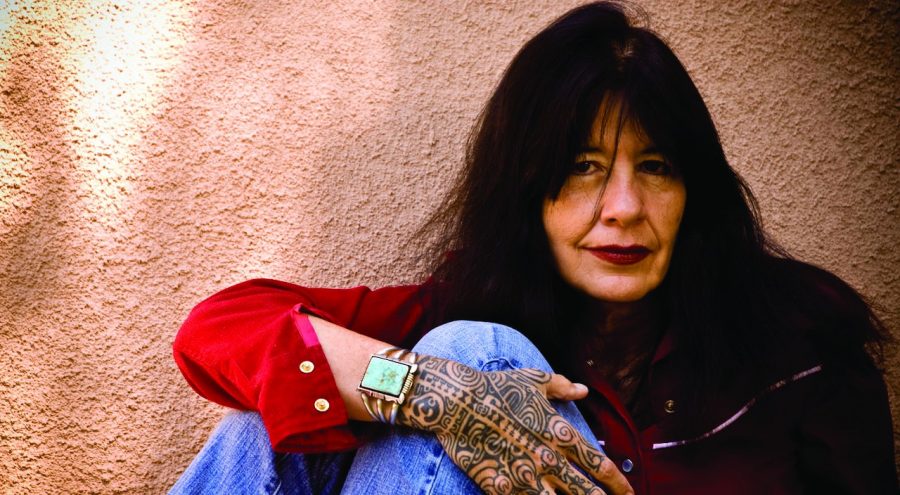Read these four contemporary poets to celebrate National Poetry Month
Photo by Paul Abdoo on joyharjo.com/media
Joy Harjo, a Native American feminist writer, is the current U.S. Poet Laureate.
April 17, 2020
Ever since 1996, April has been designated as National Poetry Month, where we take the time to recognize and appreciate the art of words. We might tend to think of poetry as a flowery, outdated art form, but it’s important to remember that writers are still creating incredible new poetry to this day.
The best way to celebrate National Poetry Month is by reading poetry and if you’re like most Californians, you’ll be spending a lot more time at home than usual this month. Why not take advantage of this time to learn more about some of America’s greatest living poets and the revolutionary work they’re putting out?
Billy Collins: Manhattan-born Billy Collins, who uses a simple, unassuming writing style, is notable for his emphasis on making poetry accessible to all instead of seeing it as an elitist, esoteric art form. His poems, which are mostly about everyday life, tend to be written in free verse and often have a humorous bent.
While Collins utilizes wit in his writing, his poems are not only about trivial matters. He often incorporates deeper, more profound themes like death, loss, and memory into his poetry.
Collins, who was the U.S. Poet Laureate from 2001 to 2003, wrote a touching poem called “The Names” about the victims of the 9/11 terrorist attacks. His website is billycollinspoetry.com.
Joy Harjo: Serving as the 2019-20 U.S. Poet Laureate, Joy Harjo writes poetry about her experience as a member of the Muscogee (Creek) Nation.
Ever since her first book “She Had Some Horses” was published in 1983, Harjo has been recognized for her blend of realism and myth, her perspective as a Native American feminist and her focus on both community and individual struggles.
Her work delves into the relationship between past, present and future. As she brings attention to the injustice that her people have historically experienced, she explores the theme of survival and looks toward the future. Harjo’s most recent poetry collection is “American Sunrise” (2019). Her website is joyharjo.com.
Aimee Nezhukumatathil: Aimee Nezhukumatathil is a poet whose work bridges the gaps between her three cultures: Filipino, Indian and American. Her work is noteworthy for its emphasis on nature, vivid word choice and themes of cultural struggle.
Nezhukumatathil’s writing is at once exotic and familiar, humorous and profound. While her poems directly relate to her own experiences, they have broad appeal due to their conversational tone and relatable topics.
Nezhukumatathil has penned four collections of poetry, most recently 2018’s “Oceanic”. Her website is aimeenez.net.
Rigoberto González: Born in California to Mexican immigrants, González writes on his experiences growing up in a migrant farmworker family and facing hardships and poverty. His poetry is often serious, but not overly heavy.
Setting, place and the idea of home is particularly important to González’s writing. In his vibrant poems, González often explores the perspective of someone or something else: a Gila monster, a house, a soldier.
The most recent of his five poetry collections is “The Book of Ruin” (2019). His website is rigobertogonzalez.com.
Whether you read the writings of one of these poets or those of another poet, living or deceased, hopefully, you come to a greater appreciation of the importance of poetry as a vehicle of expression and artistic beauty.
Reading the great poets of the past and the present will enlighten and refresh you, or maybe even inspire you to write a poem of your own.


